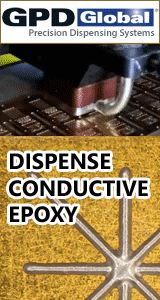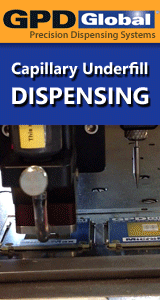Printed Circuit Board Assembly & PCB Design Forum
SMT electronics assembly manufacturing forum.
- SMTnet
- »
- Electronics Forum
- »
- Solder Paste Volume
Solder Paste Volume
![]() Hello everybody,
Two questions came up during an audit (o...
- Mar 29, 2001
by
Juergen
Hello everybody,
Two questions came up during an audit (o...
- Mar 29, 2001
by
Juergen
![]()
![]()
![]() AOI technology is over-priced and inconsistent...lots of fal...
- Mar 29, 2001
by
Peterson
AOI technology is over-priced and inconsistent...lots of fal...
- Mar 29, 2001
by
Peterson
![]()
![]()
![]() measuring Paste volume or at least paste height is an essenc...
- Mar 29, 2001
by
JohnW
measuring Paste volume or at least paste height is an essenc...
- Mar 29, 2001
by
JohnW
![]()
![]()
![]() measuring Paste volume or at least paste height is an essenc...
- Mar 29, 2001
by
JohnW
measuring Paste volume or at least paste height is an essenc...
- Mar 29, 2001
by
JohnW
![]()
![]()
![]() You can buy plenty of paste height measuring systems today, ...
- Apr 06, 2001
by
Steve Brown
You can buy plenty of paste height measuring systems today, ...
- Apr 06, 2001
by
Steve Brown
![]()
![]()
![]() FYI- Toe Fillets have not been required per IPC 610b/c (they...
- Apr 06, 2001
by
CAL
FYI- Toe Fillets have not been required per IPC 610b/c (they...
- Apr 06, 2001
by
CAL
![]()
![]()
![]() Why measure solder volume? I believe if one understand the p...
- Apr 09, 2001
by
Why measure solder volume? I believe if one understand the p...
- Apr 09, 2001
by
![]()
![]() I've been wondering if I was the only person thinking this. ...
- Apr 09, 2001
by
Steve Thomas
I've been wondering if I was the only person thinking this. ...
- Apr 09, 2001
by
Steve Thomas
![]()
![]()
![]() First, some people wait a lifetime for ... ;-)
Second, ho...
- Apr 09, 2001
by
davef
First, some people wait a lifetime for ... ;-)
Second, ho...
- Apr 09, 2001
by
davef
![]()
![]()
![]() Didn't you hear? Fendelaz went out of business and sold the...
- Apr 10, 2001
by
Steve Thomas
Didn't you hear? Fendelaz went out of business and sold the...
- Apr 10, 2001
by
Steve Thomas
![]()
![]()
![]() What time? An in-line bot with a vision system tuned for pa...
- Apr 10, 2001
by
davef
What time? An in-line bot with a vision system tuned for pa...
- Apr 10, 2001
by
davef
![]()
![]()
![]() OK, you're talking about inline AOI doin' all the work for y...
- Apr 10, 2001
by
Steve Thomas
OK, you're talking about inline AOI doin' all the work for y...
- Apr 10, 2001
by
Steve Thomas
![]()
![]()
![]() Listen, there is a $20 to 30k laseriffic paste measuring sys...
- Apr 10, 2001
by
davef
Listen, there is a $20 to 30k laseriffic paste measuring sys...
- Apr 10, 2001
by
davef
![]()
![]()
![]() I think we've miscommunicated....I don't use that thing for ...
- Apr 11, 2001
by
Steve Thomas
I think we've miscommunicated....I don't use that thing for ...
- Apr 11, 2001
by
Steve Thomas
![]()
![]()
![]() Let me put my two cents into this argument..After being part...
- Apr 11, 2001
by
Cyber Legacy Division
Let me put my two cents into this argument..After being part...
- Apr 11, 2001
by
Cyber Legacy Division
![]()
Juergen
- SMTnet
- »
- Electronics Forum
- »
- Solder Paste Volume






